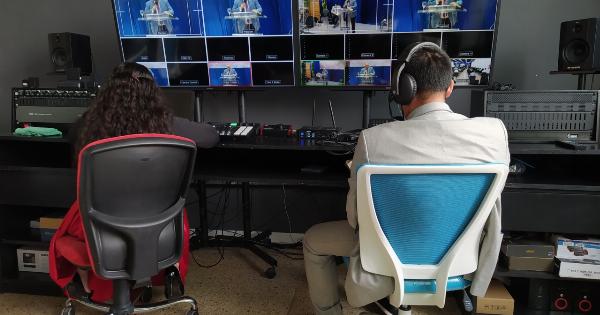Diplomacy and the ecclesiastical realm have long been subjects of fascination and intrigue. Both spheres have shaped the course of history and influenced the development of societies around the world.
However, they are also shrouded in myths and misconceptions that obscure the realities of their workings. In this article, we embark on an exploration of the myths and realities surrounding diplomacy and the ecclesiastical world, shedding light on their true nature and significance.
Myth 1: Diplomatic Negotiations are solely about Power and Interests
One of the prevailing myths about diplomatic negotiations is that they revolve solely around power dynamics and national interests.
While these elements certainly play a significant role, diplomacy also encompasses principles such as dialogue, compromise, and respect for international law. Successful diplomats understand the importance of building relationships and finding common ground to achieve mutually beneficial outcomes.
Myth 2: Ecclesiastical Institutions are disconnected from Political Realities
Many people believe that ecclesiastical institutions exist in a separate realm, detached from political realities.
However, throughout history, religious organizations have often intertwined with political structures, exerting influence and shaping policies. From the papacy’s involvement in medieval European politics to the role of religious leaders in modern-day social movements, ecclesiastical institutions have played a crucial part in political affairs.
Myth 3: Diplomacy is a Male-Dominated Field
While it is true that diplomacy has historically been male-dominated, significant progress has been made in recent years to promote gender equality in the field.
Many countries now have female ambassadors, and international organizations actively pursue gender balance in diplomatic representations. Breaking the myth of diplomacy as a solely male domain fosters diverse perspectives and enhances diplomatic outcomes.
Myth 4: Ecclesiastical Power is Monolithic
The stereotype of a monolithic, all-powerful ecclesiastical institution does not accurately reflect the diversity and complexities within religious organizations.
Different branches, factions, and interpretations exist within various religions, resulting in a wide range of views and practices. Ecclesiastical power is often fragmented, with internal debates and divisions guiding the direction of religious institutions.
Myth 5: Diplomacy is primarily conducted through Ambassadors and Embassies
While ambassadors and embassies play a crucial role in diplomatic relations, diplomacy extends far beyond these formal channels.
Various actors, including non-governmental organizations, international organizations, and civil society groups, contribute to diplomatic efforts. Track II diplomacy, involving unofficial dialogues and humanitarian initiatives, often complements formal channels and promotes peaceful resolutions.
Myth 6: Ecclesiastical Authority is Absolute
Contrary to the perception of absolute ecclesiastical authority, religious institutions often face internal and external challenges to their influence.
Different interpretations of religious texts, calls for reform, and clashes with secular authorities shape the limits of ecclesiastical power. Religious leaders must navigate complex political and societal landscapes, adapting their positions to retain relevance and address contemporary issues.
Myth 7: Diplomacy is deterministic and unchangeable
Another myth surrounding diplomacy is that it operates by fixed rules and rigid protocols. In reality, diplomacy is a dynamic and evolving practice that adapts to changing global circumstances.
New actors, such as technology companies and non-state actors, are increasingly influencing diplomatic processes. Additionally, diplomatic norms and practices continuously evolve to address emerging challenges, such as climate change and cybersecurity.
Myth 8: Ecclesiastical Institutions are only concerned with Spiritual Matters
Ecclesiastical institutions are often associated solely with matters of faith and spirituality. However, religions also address social, ethical, and moral concerns.
Religious organizations have historically been at the forefront of advocating for social justice, human rights, and humanitarian aid. The intersection of religious principles and secular issues has played a pivotal role in shaping societies throughout history.
Myth 9: Diplomatic Efforts always lead to Immediate Solutions
Diplomatic negotiations are rarely quick-fix solutions to complex global issues. Achieving diplomatic success often involves long processes of dialogue, mediation, and compromise.
Historical examples, such as the Paris Peace Conference after World War I or ongoing peace negotiations in conflicts worldwide, demonstrate the time and effort required to reach sustainable agreements. Patience and perseverance are crucial attributes for successful diplomacy.
Myth 10: Ecclesiastical Institutions are Inherently Conservative
While some ecclesiastical institutions uphold traditional values, others exhibit progressive ideas and adapt to contemporary societal changes.
Religious movements advocating for inclusivity, environmental stewardship, and gender equality challenge the myth of inherent conservativism. The dynamics within religious organizations reflect the broader societal debates and transformations occurring around the world.





























